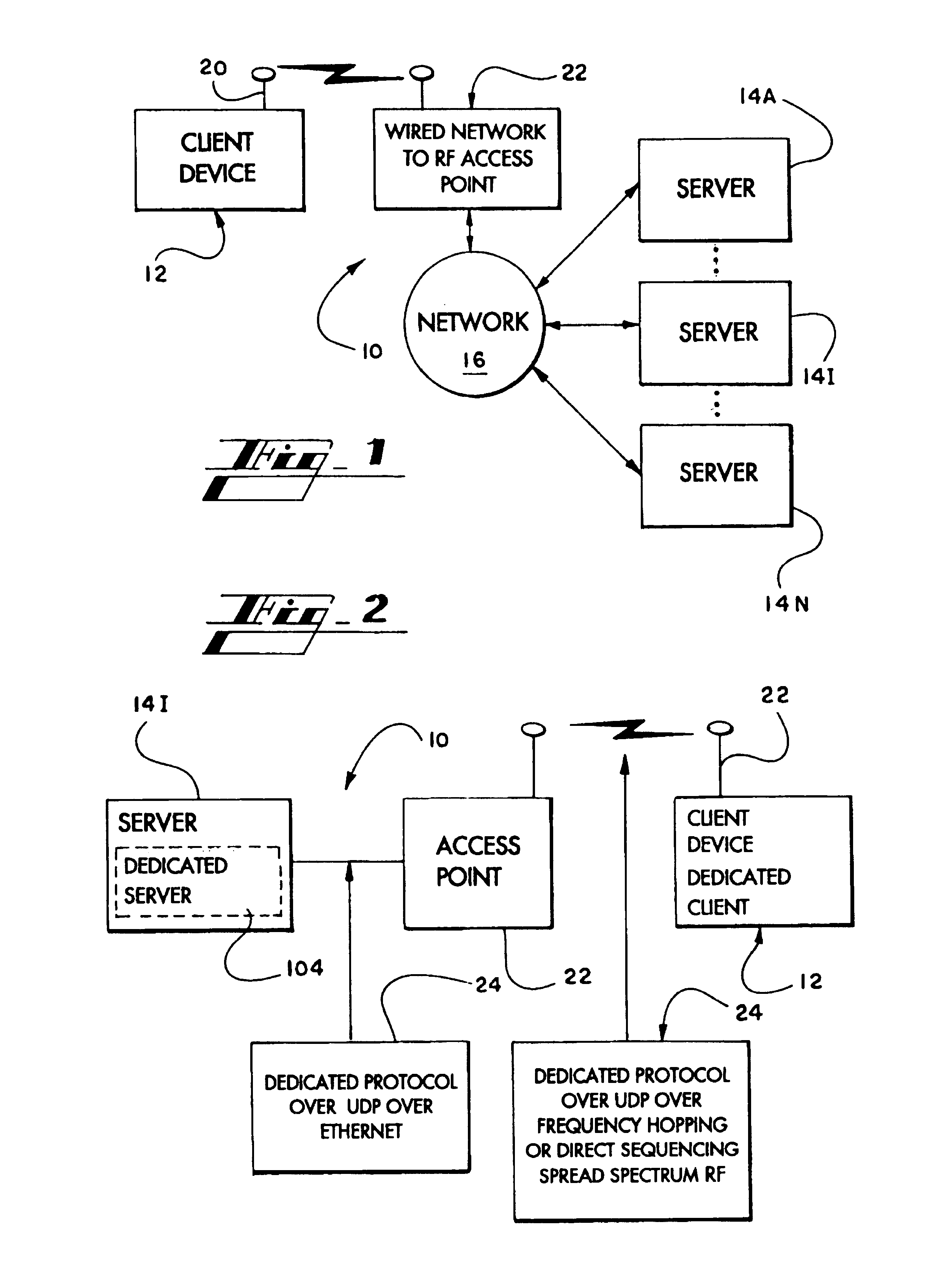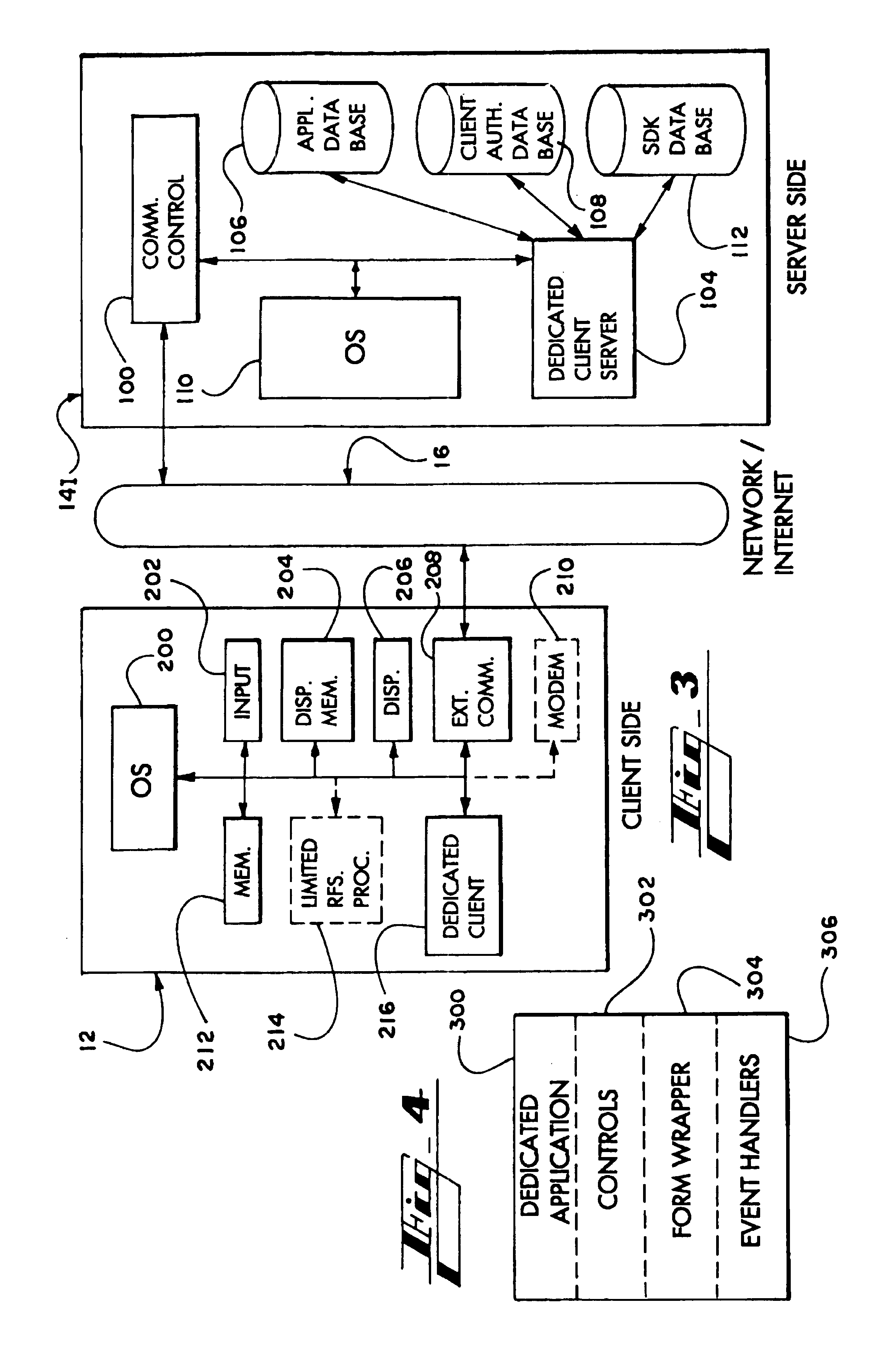Method and apparatus allowing a limited client device to use the full resources of a networked server
a client device and network server technology, applied in the direction of program control, instruments, multi-programming arrangements, etc., can solve the problems of limited bandwidth, the nature and capability the current normally accepted methods of achieving thin-client access to central applications have not evolved along with the nature of the application being accessed, so as to achieve efficient transmission of messages and comply with the law. , the effect of high efficiency
- Summary
- Abstract
- Description
- Claims
- Application Information
AI Technical Summary
Benefits of technology
Problems solved by technology
Method used
Image
Examples
Embodiment Construction
[0029]FIG. 1 shows a system providing overall system thin-client devices with access to the full resources of a server in accordance with a preferred configuration of the present invention. In FIG. 1, system 10 is seen to include multiple client-side devices 12A through 12M. System 10 supports many such client devices 12, and such devices 12 can enter and exit the system at random. System 10 provides access for any arbitrary client device 12I to a plurality of servers 14A through 14N on the so-called server-side. Servers 14A through 14N, in turn, are connected to each other and to the client devices over at least one network 16 which provides the communication medium. A second network also is shown in broken lines as it will be apparent that multiple networks can be incorporated in the preferred system. Such communication mediums could comprise telephone switching networks, ethernet networks, Wireless 802.11 networks, Mobitex® messaging networks and the like. Because transmission be...
PUM
 Login to View More
Login to View More Abstract
Description
Claims
Application Information
 Login to View More
Login to View More - R&D
- Intellectual Property
- Life Sciences
- Materials
- Tech Scout
- Unparalleled Data Quality
- Higher Quality Content
- 60% Fewer Hallucinations
Browse by: Latest US Patents, China's latest patents, Technical Efficacy Thesaurus, Application Domain, Technology Topic, Popular Technical Reports.
© 2025 PatSnap. All rights reserved.Legal|Privacy policy|Modern Slavery Act Transparency Statement|Sitemap|About US| Contact US: help@patsnap.com



